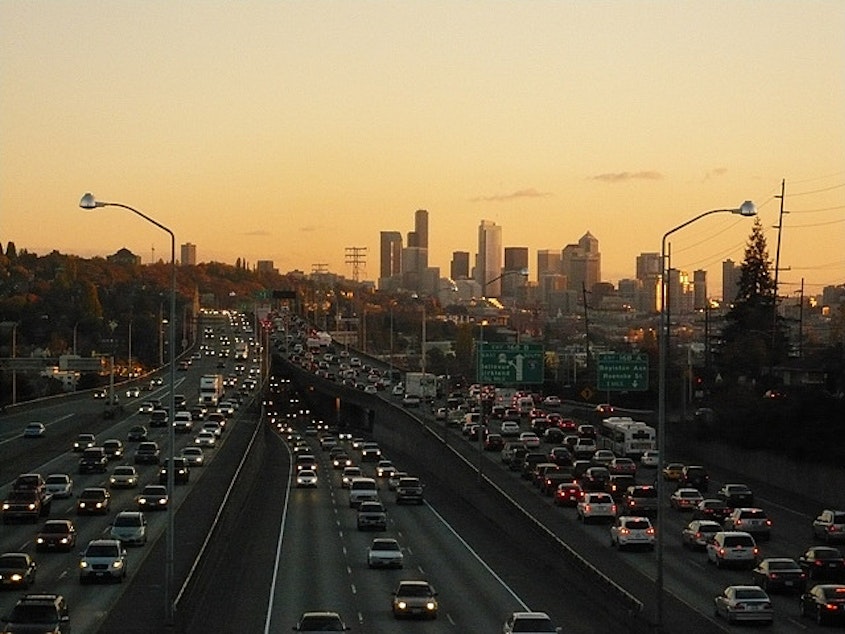Seattle Congestion ‘Is Going To Get Way Worse’

Traffic is getting worse in Seattle. Our rising population is driving it. And even with a multibillion-dollar transportation package, it's not expected to improve.
Which is why we plug our ears when we hear someone like Gil Penalosa, a former parks commissioner from Colombia, say, “I think congestion is good.”
Has he juddered along in I-405 traffic? Has he idled on Montlake at 4 p.m.?
“There is no city in the world the size of Seattle that has solved the issue of mobility through the private car,” Penalosa says. “None.”
Penalosa, who leads a campaign for more livable cities, says soul-churning traffic triggers change.
Sponsored
“When there is congestion, people are willing to pay taxes to improve congestion,” he says.
They move closer to their friends. They move closer to their jobs. They walk or bike. And that is happening in Seattle, but congestion is getting worse.
Lawmakers are set to authorize billions of dollars in spending on roads, much of it in Seattle. But the transportation package is catch-up money to fix our broken roads. We put off maintenance for years, says Mark Hallenbeck director of the Washington State Transportation Center, “and that’s coming back to bite us.”
To relieve congestion, roads would need to expand, which is not going to happen. Because even if Washington state had unlimited funds, which it does not, Seattle is short of physical space. Add to that the million more people the Puget Sound Regional Council says will live here by 2040.
“Life will suck big time,” Hallenbeck says.
Sponsored
“When you continue to add people, there isn’t a place for them to go,” he says. “Congestion on what roads we do have is going to get way worse.”
The state is resigned. Washington’s transportation department has a road map that indicates it expects urban highways to be congested – with stops and starts and sudden changes in speed.
State Standards: What Level Of Congestion Is Acceptable Across Washington
Captured here is the state’s standard expectations of road conditions at peak hours. Zoom in and click your route to see what level of service to expect. Data is from the Washington State Department of Transportation, 2014.
Sponsored
Several roads on the map stick out for their poor performance: Highway 599 in Tukwila, Montlake and its slow-moving cousin, Sand Point Way, and almost anywhere along Highway 99.
There are some glimmers of hope, like I-405. The state hasn’t given up on it yet. The transportation package is expected to set aside money to build extra lanes and more capacity.
But Hallenbeck says Eastsiders should temper their excitement.
“Yes, you can fix some bottlenecks,” he said, “but the reality is once you fix those bottlenecks you’re going to quickly find the next bottleneck.”
